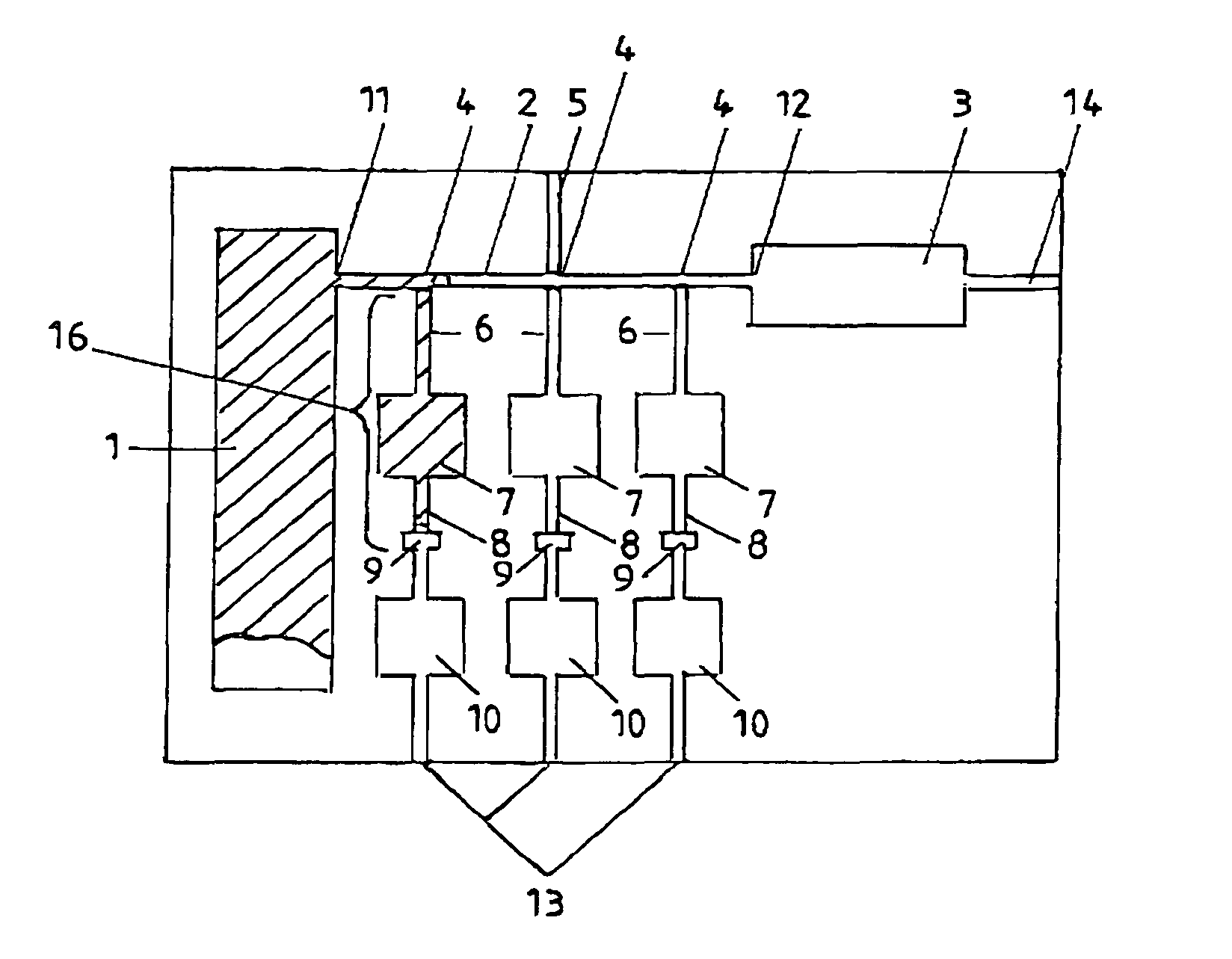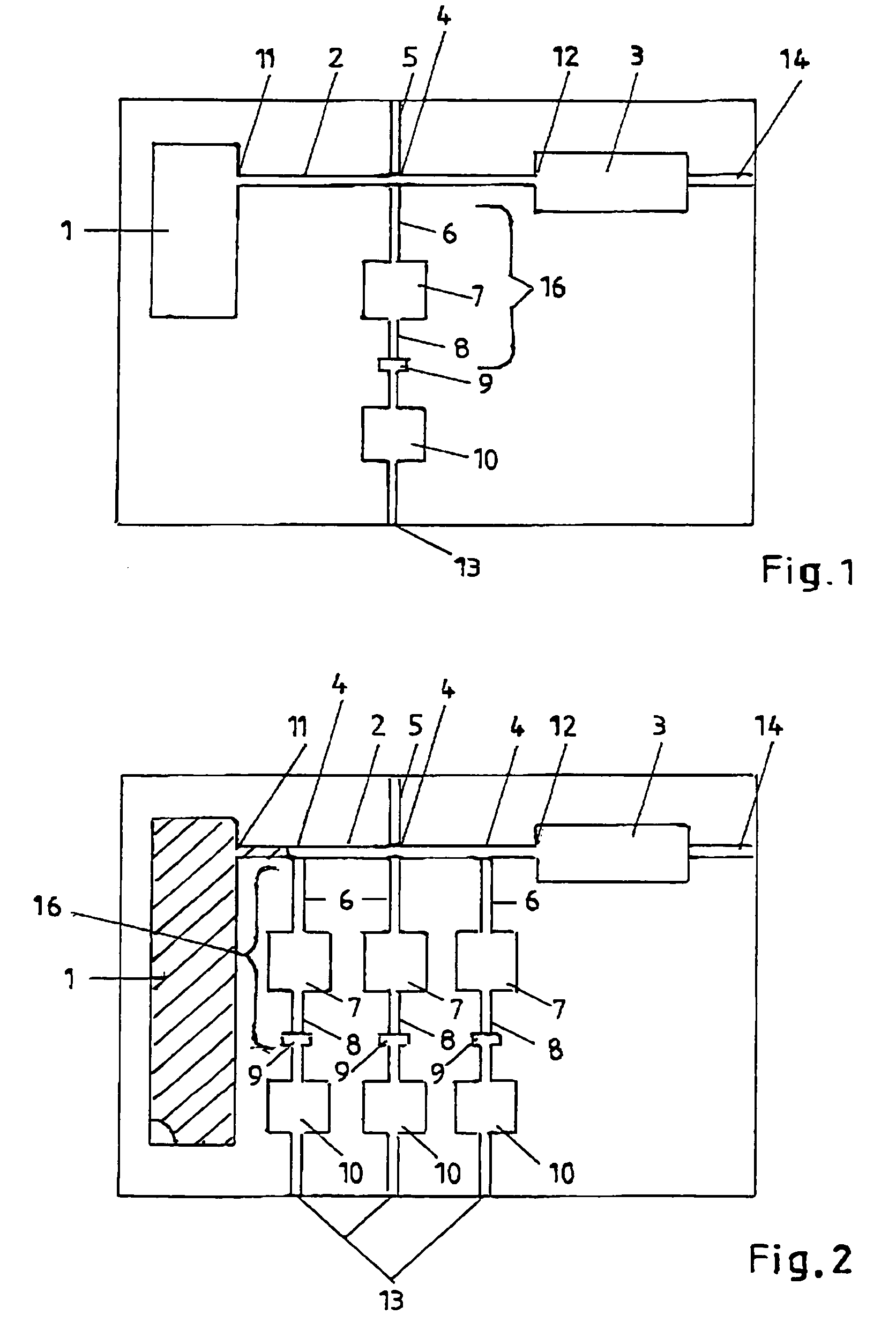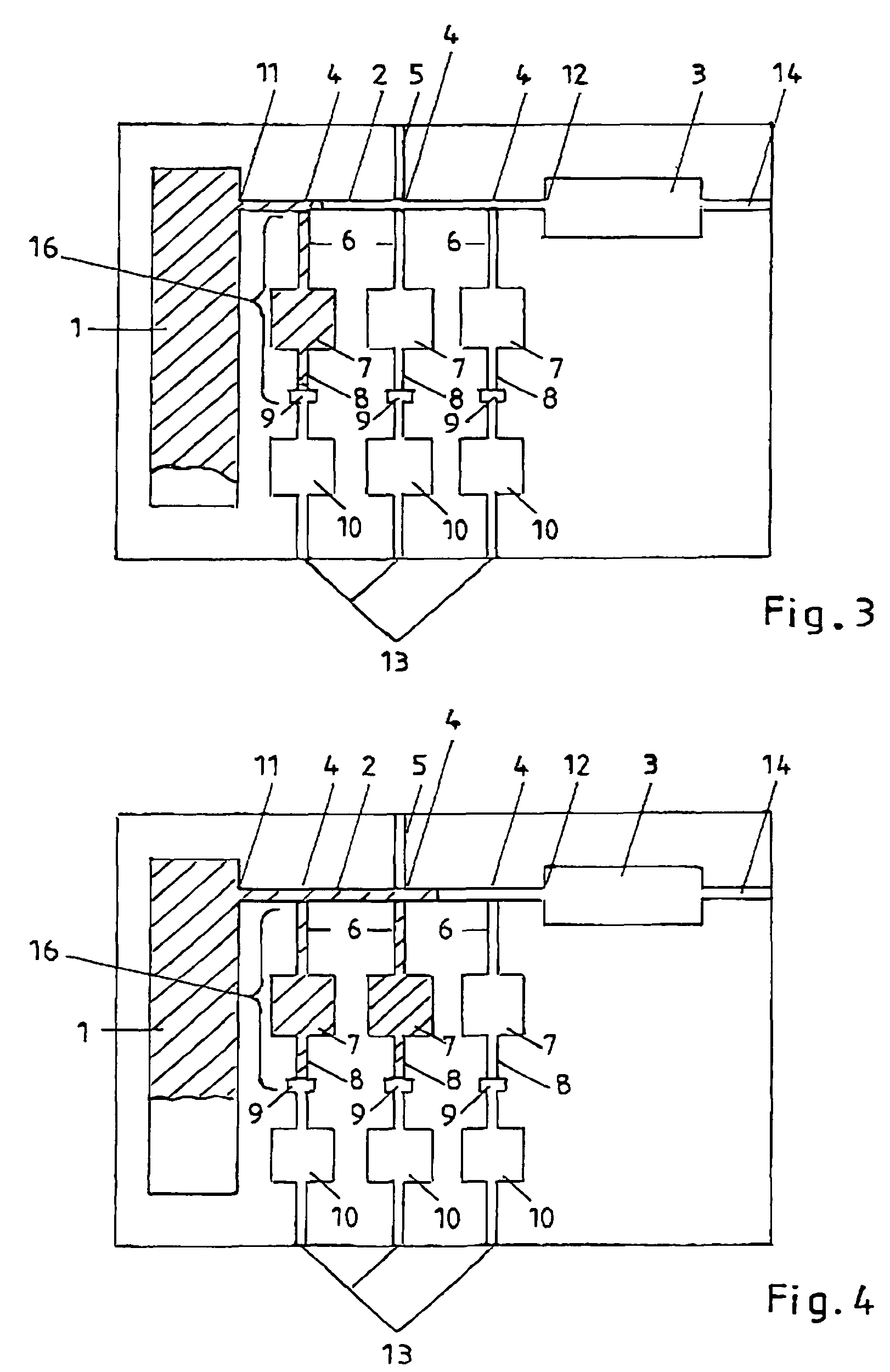Microfluidic arrangement for metering of liquids
a microfluidic arrangement and liquid technology, applied in the field of microfluidic arrangement, can solve problems such as the possibility of complicatedness
- Summary
- Abstract
- Description
- Claims
- Application Information
AI Technical Summary
Benefits of technology
Problems solved by technology
Method used
Image
Examples
second embodiment
[0032]The liquid contained in the defined volume of the second channel system 6, 7, 8 can then be transported into the third channel system 10 after the action of the capillary stop 9 has been neutralized. This is described in greater detail using FIG. 7 for the
[0033]The second embodiment, which is shown in FIGS. 2 to 6, corresponds in large parts to the first embodiment shown in FIG. 1. Therefore the same components of the microfluidic arrangements as shown in FIG. 1 and FIG. 2 to FIG. 6 are provided with the same reference numbers. The first embodiment and the second embodiment differ simply in that in the second embodiment there are several, specifically three second channel systems 16 and three third channel systems 10. Moreover the inlet reservoir 1 is made distinctly larger, the volume of the inlet reservoir 1 here also being less than or equal to the sums of the volumes of the second channel systems 16 and of the second outlet reservoir 3.
first embodiment
[0034]The three second channel systems 16 branch off at the branch points 4 in the direction from the inlet 11 to the outlet 12 in succession from the channel of the first channel system 2. The first sections 6 of the second channel system 16 are each connected to the branch points 4. These first sections 6 of the channel system then discharge, as already known from the first embodiment, into a second section 7 which then discharges into the third section 8. The third section 8 of the second channel system 16 then ends at one capillary stop 9 at a time. A third channel system 10 which discharges into one second outlet 13 at a time is then connected downstream of the capillary stop 9.
[0035]If at this point in the second embodiment as shown in FIG. 2 to FIG. 6 the inlet reservoir 1 is filled with liquid from the outside, this liquid enters the first channel system 2 at the inlet 11. As a result of the acting capillarity the liquid is drawn into the channel of the first channel system ...
PUM
 Login to View More
Login to View More Abstract
Description
Claims
Application Information
 Login to View More
Login to View More - R&D
- Intellectual Property
- Life Sciences
- Materials
- Tech Scout
- Unparalleled Data Quality
- Higher Quality Content
- 60% Fewer Hallucinations
Browse by: Latest US Patents, China's latest patents, Technical Efficacy Thesaurus, Application Domain, Technology Topic, Popular Technical Reports.
© 2025 PatSnap. All rights reserved.Legal|Privacy policy|Modern Slavery Act Transparency Statement|Sitemap|About US| Contact US: help@patsnap.com



